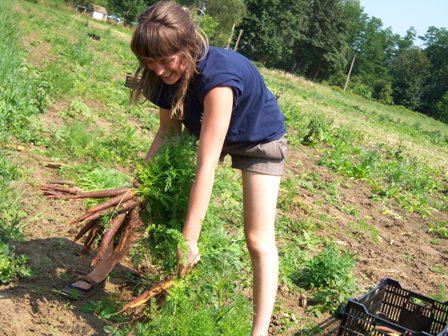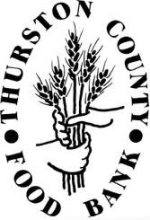The TCFB Gleaners worked closely with 7 small farmers in Thurston County, most of which grow diverse row crops for market or CSA (community supported agriculture). It is a good idea to familiarize yourself with the growing season and the crops that these farmers will be donating, and know the proper harvesting techniques. In addition, there are a few handy tips to keep in mind when initiating contact with a new donor, and before bringing volunteers to glean on their farm. Making an in-person visit is recommended, and helpful questions include:
-
 What is your harvesting schedule? What is the best day for gleaners to come out so as not to be in the way of your workers? Will a staff person be available to answer questions when gleaners are on the farm?
What is your harvesting schedule? What is the best day for gleaners to come out so as not to be in the way of your workers? Will a staff person be available to answer questions when gleaners are on the farm?
-
Are there areas off limits to gleaners? Are there irrigation pipes or equipment for gleaners to be careful around?
-
What equipment is available for gleaners to use (wheelbarrows, ladders, wash station, etc.)?
-
Will you want a receipt for your donation?
Many farmers prefer to show gleaners where to harvest from each time they come to the farm, to reduce the risk of picking the wrong rows, and to give specifics about what is being gleaned. Other farmers are happy with a system of flagging, or putting signs at the end of the rows they wanted to be gleaned. It is important to maintain clear communication between the gleaning event leader and the grower so that a good relationship may continue, and the proper crops are harvested. When in doubt, always double check. Always be aware of where the planted rows are, and to always walk in the pathways unless you are instructed otherwise, to reduce compacting the soil, or stepping on recently planted crops.
When harvesting row crops, take note of what is available, and how much it is feasible to glean in the time you and your volunteers have committed to the task. Some farms have many crops ready to glean all at once, and you may have limited time and capacity, so ask yourself these questions:
-
How many produce bins do we have? How much of each crop should we harvest?
-
What crops will feed more families? Which are most popular? Which are most expensive in the grocery store? Which have the least tedious harvesting/washing process?
These are the crops to prioritize if you have to be selective.
Be consistent with the farmer about follow-up, tracking their donations, letting them know when you’d like to come back, and showing your appreciation.

 What is your harvesting schedule? What is the best day for gleaners to come out so as not to be in the way of your workers? Will a staff person be available to answer questions when gleaners are on the farm?
What is your harvesting schedule? What is the best day for gleaners to come out so as not to be in the way of your workers? Will a staff person be available to answer questions when gleaners are on the farm?